In a narrow little alleyway, tucked away in a corner of the Sestiere Castello in Venice, there’s a blue, or maybe green or turquoise, door that everybody photographs.

It must be the most photographed door in Venice. Google Maps even has it marked as a point of interest.
Therefore, it must be a famous building, right?
Well, apparently it’s not.
Calle de Mezo
The building is a beautiful palace, Venetian Gothic, and by the looks of it, probably from the early 1400s. It has clearly belonged to somebody wealthy, even if its current state is less than perfect.
However, the general literature of Venetian palaces and architecture doesn’t mention or name it.
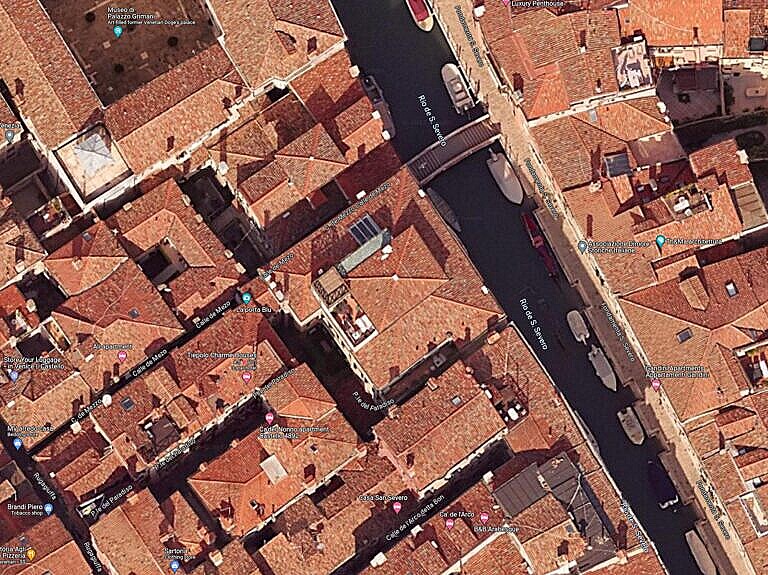
The palace has its façade on the Rio di San Severo, where we find several well-known palaces like Palazzo Zorzi, Palazzo Zorzi-Bon and Palazzo Grimani. So our palace is in excellent company, with some of the best Venetian aristocratic families.
The only clue to the identity of the building is the name of the narrow alleyway where the blue door is. It is the Calle de Mezo, which to a modern ear sounds like “alleyway in the middle.”
The da Mezzo family
Luckily, the Curiosità Veneziane by Giuseppe Tassini almost always has some kind of explanation. According to Tassini, the name of the alleyway is after a Venetian patrician family, the Da Mezzo.
In 1566, a Chiara da Mezzo notified the Dieci Savi alle Decime (the tax authorities of the Venetian Republic) that she owned some buildings in the district of S. Maria Formosa, in Ruga Giuffa, in Calle de Ca’ da Mezzo.
So the palace with the blue door probably belongs to the Ca’ da Mezzo, the palace where the family resided.
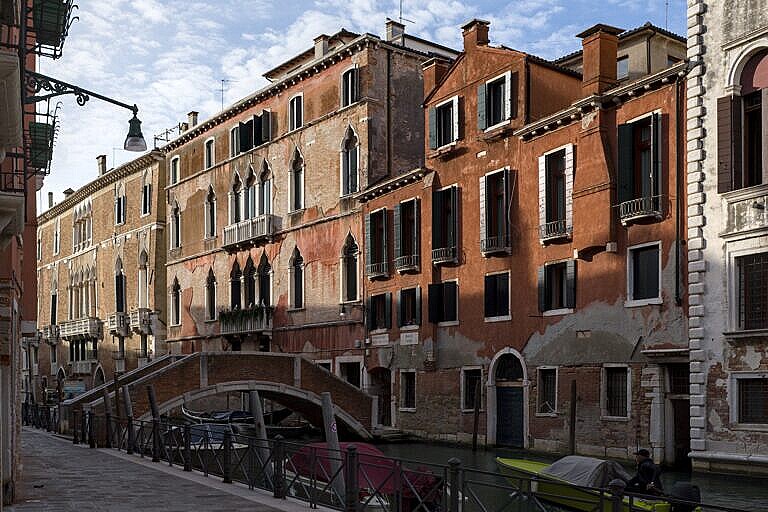
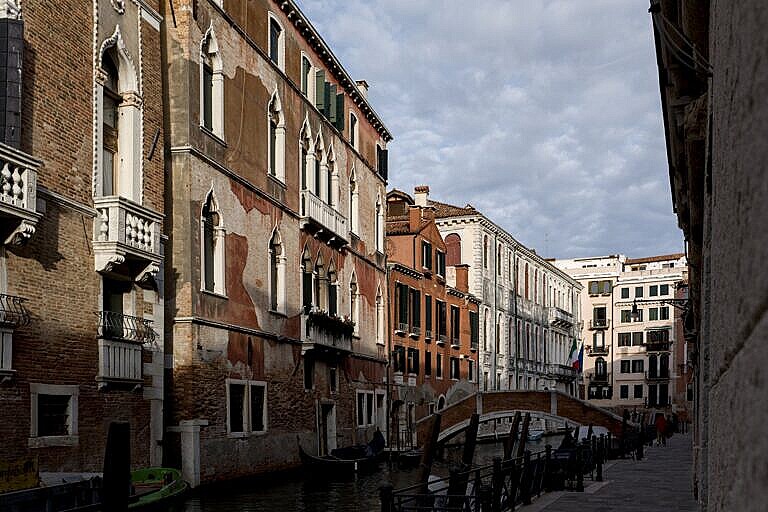
Palace doors
The archetypical Venetian palace has at least three doors.
The main door is almost always on the water. High status Venetians preferred moving around the city by boat, which is why the façade of their palaces is generally on a canal.
Palaces in Venice would also have a secondary door on the land side. If possible, it would lead into the same hallway as the main door on the waterside, but otherwise it would lead to an internal courtyard.
Both the front door on the canal side and the secondary door on the land side would be suitable presentable for important visitors.
In other words, they’re not available for servants and workers. For those, there are separate doors, a bit to the side. There’s almost always a service door on the land side, but sometimes on the waterside too.
The Ca’ da Mezzo has a service doorway on the water, and another, now blocked, on the land side, in the Calle del Paradiso, a parallel to the Calle de Mezo.
The “blue door”
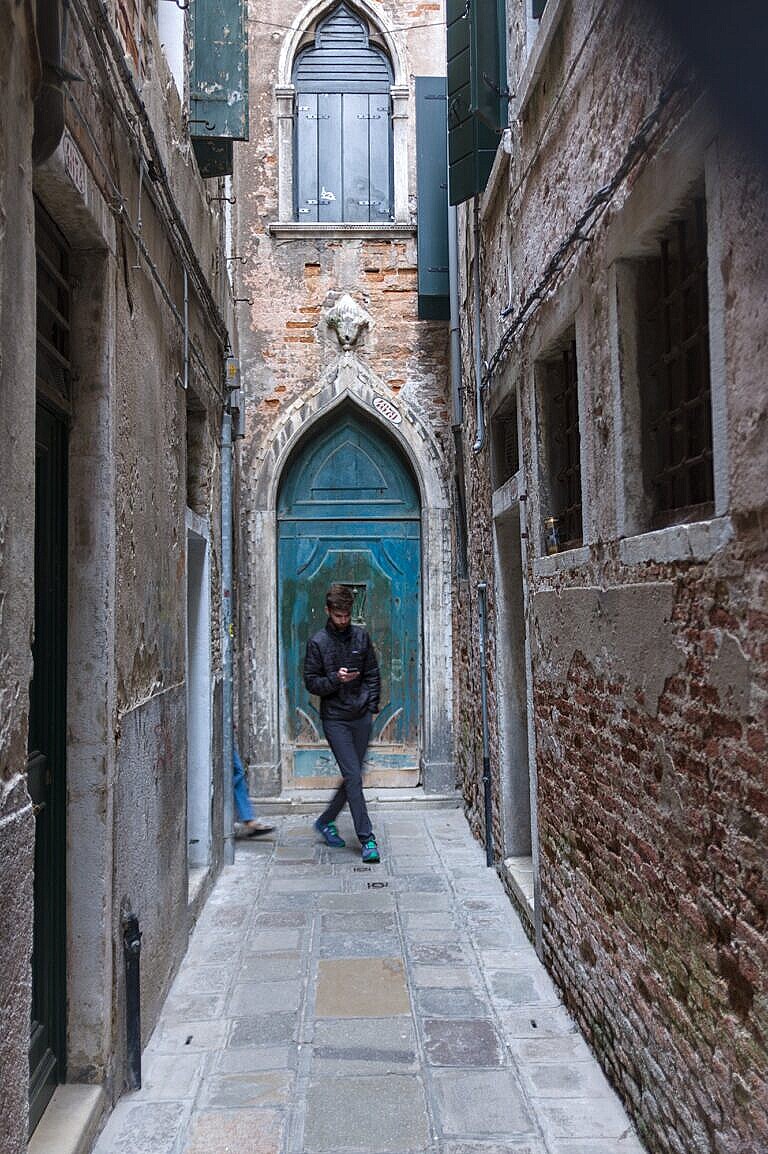
The blue door is conspicuously unused. Nobody I know has ever seen it open.
Given the configuration of the building, the door must be the secondary door on the land side, and it seems to provide access to an internal courtyard. The now blocked service door from the Calle del Paradiso would lead to the same courtyard.
The only regularly used entrance today appears to be the service door on the canal side, which can now be reached from the foot of the modern bridge at the end of the Calle de Mezo. This bridge doesn’t appear on maps from the 1800s or even the early 1900s, so it must be quite recent.
Today there are flats in the palace, as is evident from the names on the doorbells at the entrance.
Tassini also tells us that the Da Mezzo family died out in 1797 when Francesco Maria da Mezzo fell in the Rio de l’Arsenal by night. He was saved from drowning by the local night watchmen, but he died anyway that same night, probably of hypothermia.
So, while we can figure out what the door is, where it leads and why it isn’t used any more, it remains a mystery why people keep photographing it.

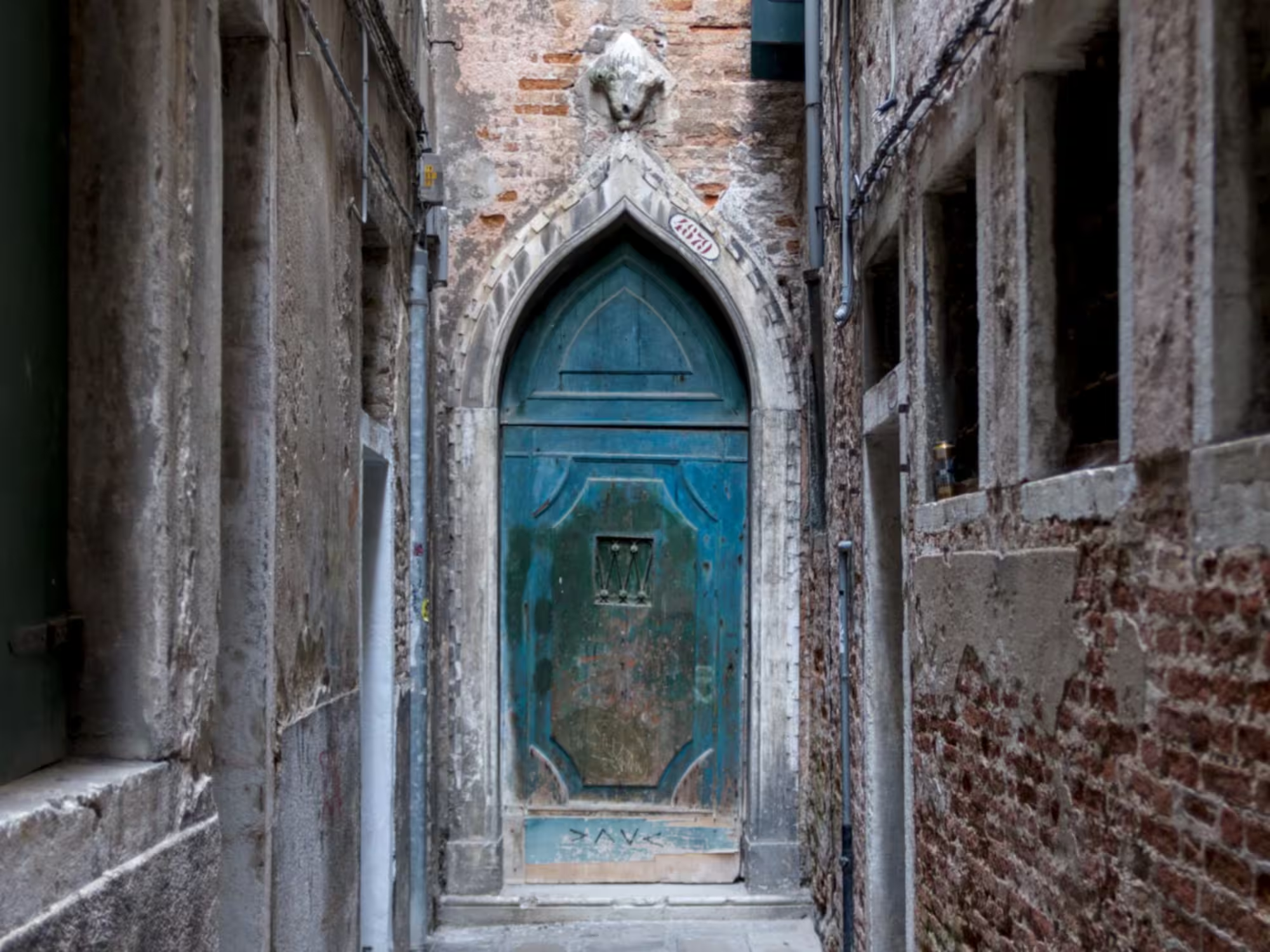
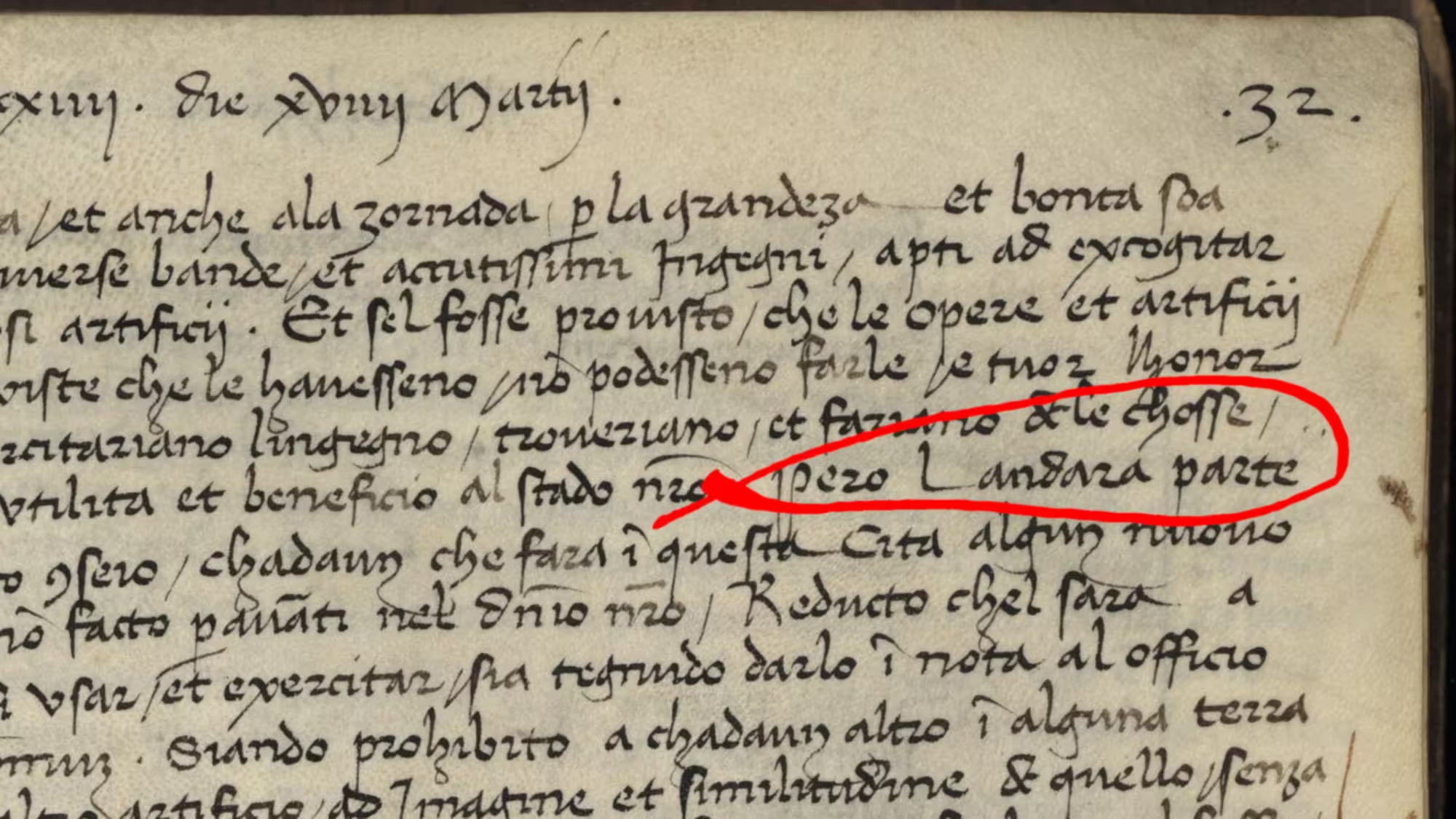


Leave a Reply